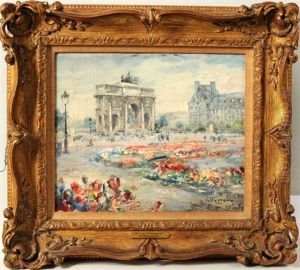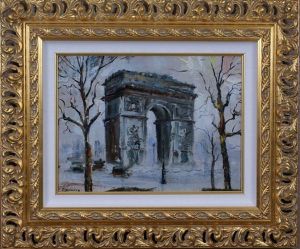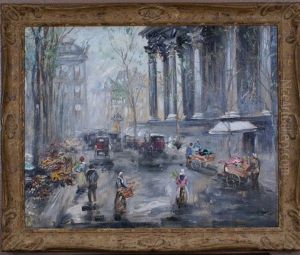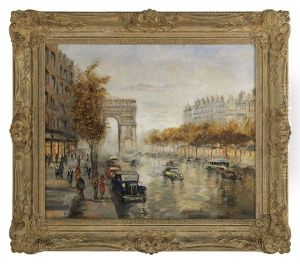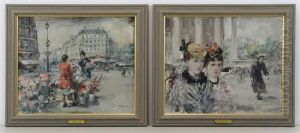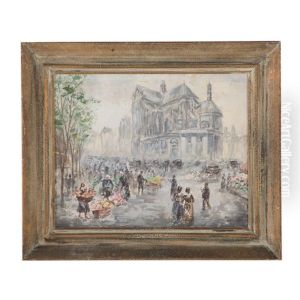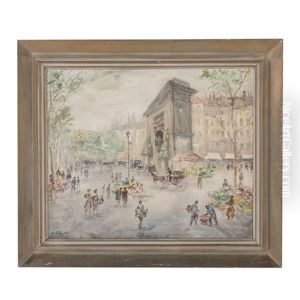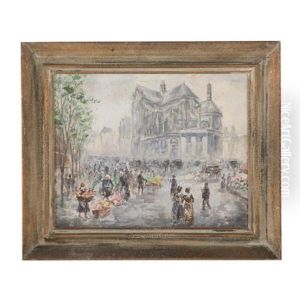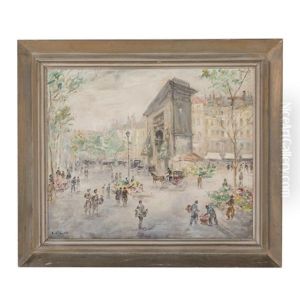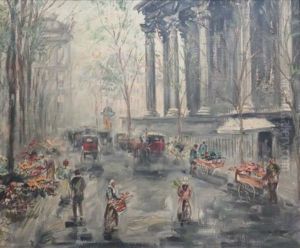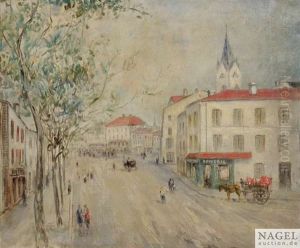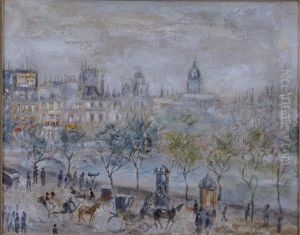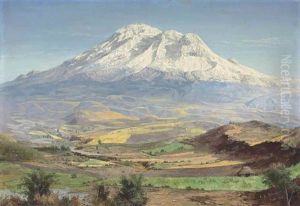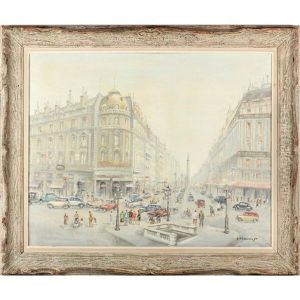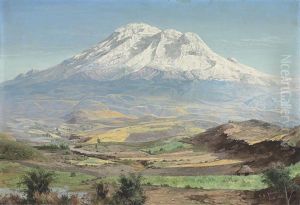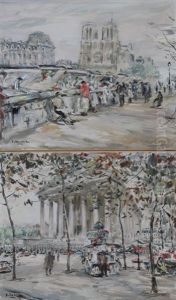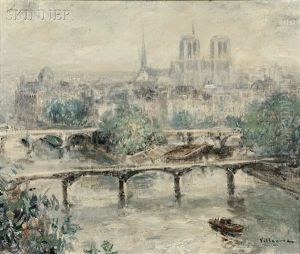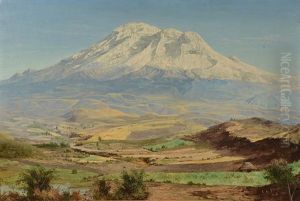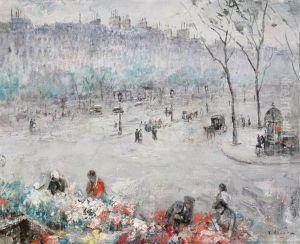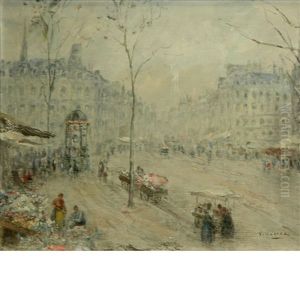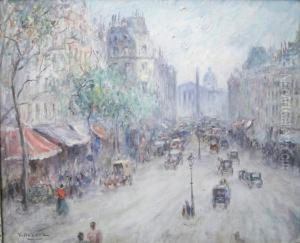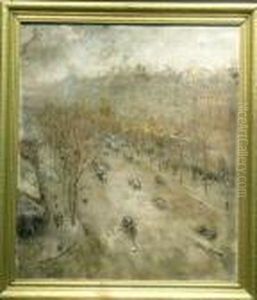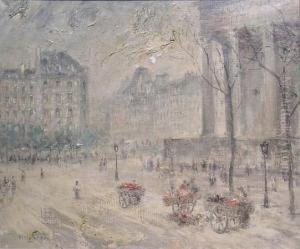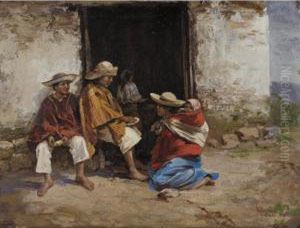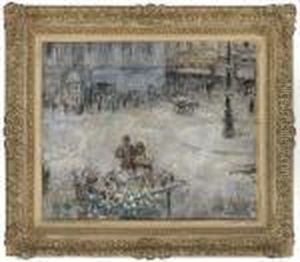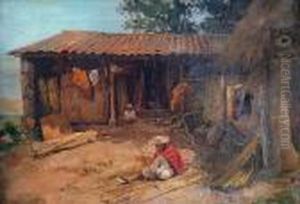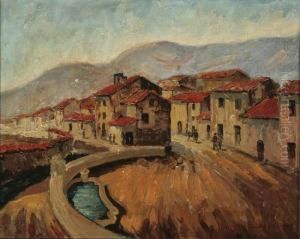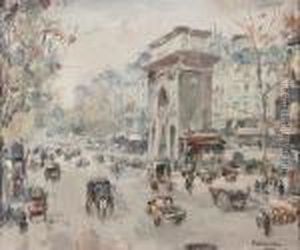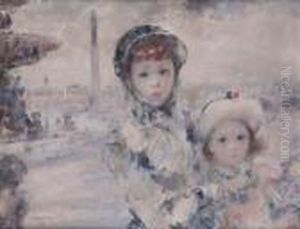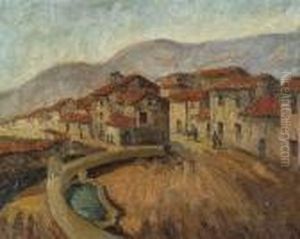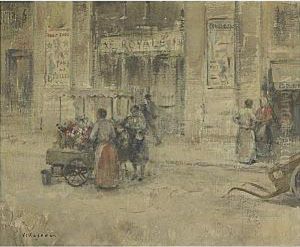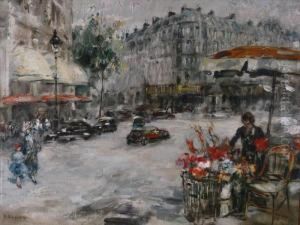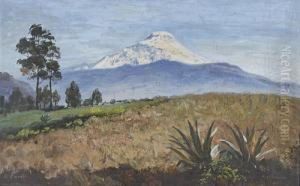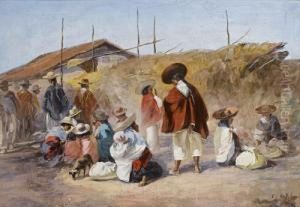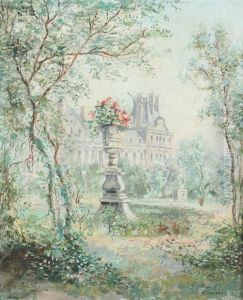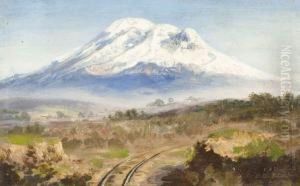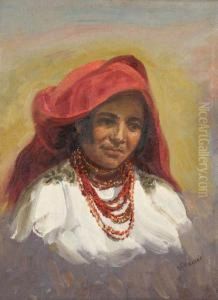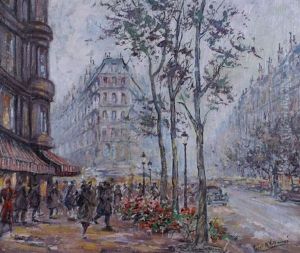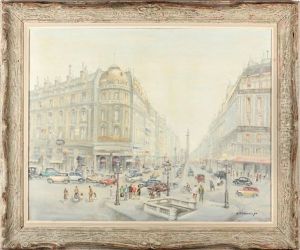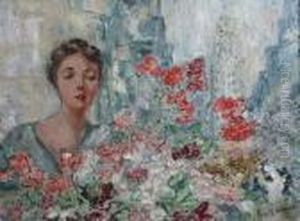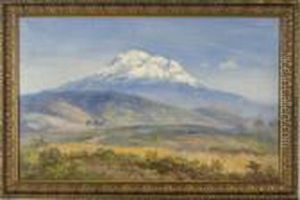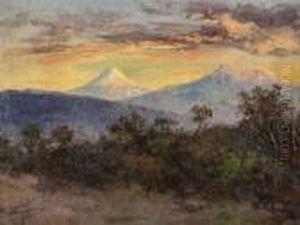Cesar A. Villacres Paintings
Cesar Augusto Villacres was an Ecuadorian painter and illustrator born on March 28, 1880, in Quito, Ecuador. He is recognized for his work that spans across various themes, including landscapes, portraits, and historical scenes. Villacres moved to France at a young age to pursue his artistic education, reflecting a pattern of many South American artists of the time seeking training in European art centers.
In Paris, he enrolled at the Académie Julian, a private art school popular among international students. There, he was influenced by the academic teachings of the time, which emphasized classical techniques and subjects. However, Villacres was also living through an era of rapid change in the art world, with the rise of Impressionism and later movements challenging traditional approaches to art.
Villacres’ work is characterized by a blend of academic techniques with a sensitivity to light and color, which shows the influence of the evolving artistic landscape in Europe. He achieved recognition not only for his paintings but also for his illustrations. His illustrations appeared in various publications, contributing to the visual culture of the era.
Despite his success in Europe, Villacres maintained strong ties to his Ecuadorian heritage. He is noted for his contributions to Ecuadorian national identity through his depictions of historical events and figures from the country’s past. His works are part of the national narrative and are celebrated for their role in shaping the visual representation of Ecuador’s history.
Cesar A. Villacres passed away on May 28, 1936, leaving behind a legacy as one of Ecuador’s most prominent artists. His paintings are housed in various art collections and museums, and he is remembered for his artistic talents that bridged European techniques with South American themes.
